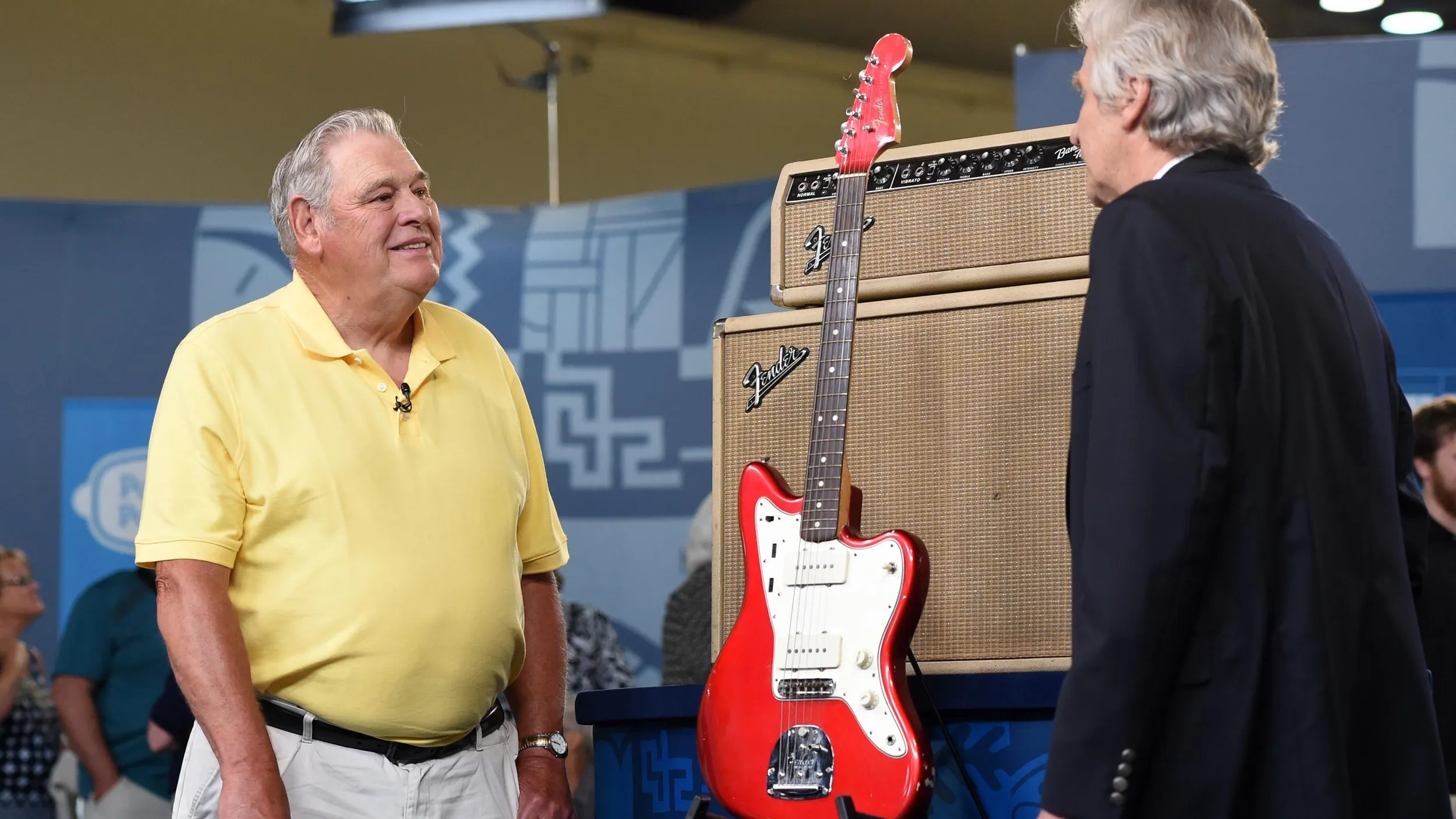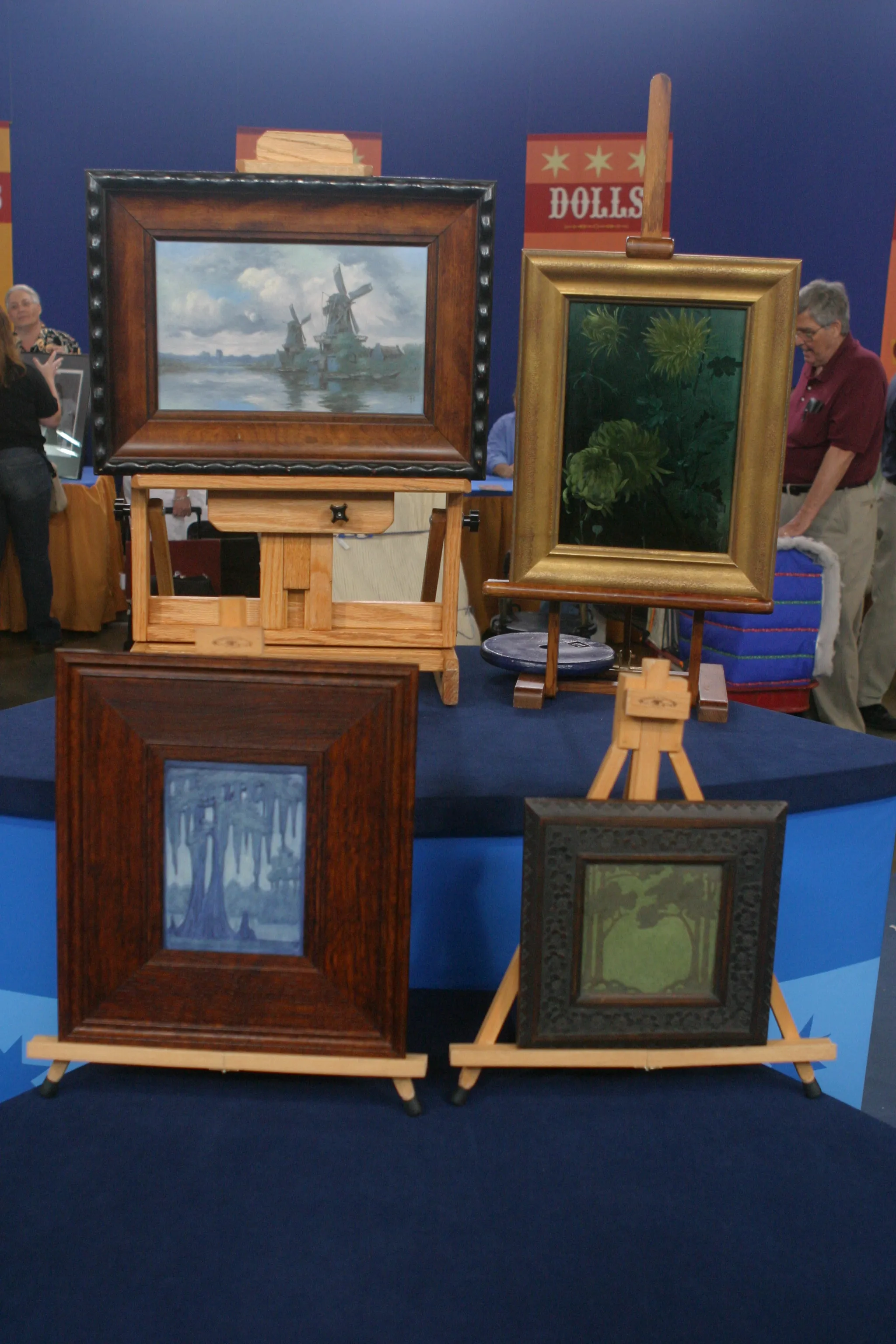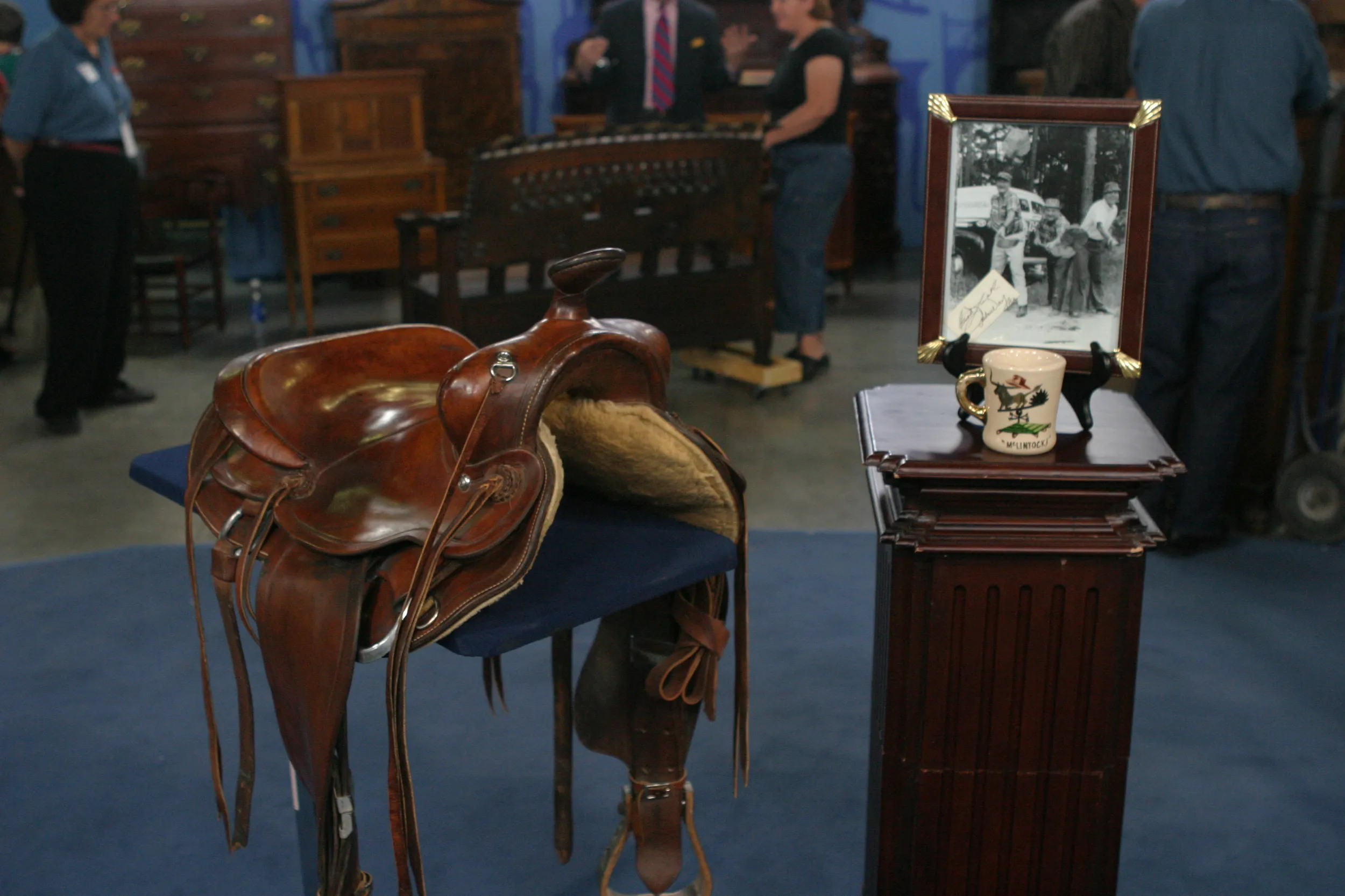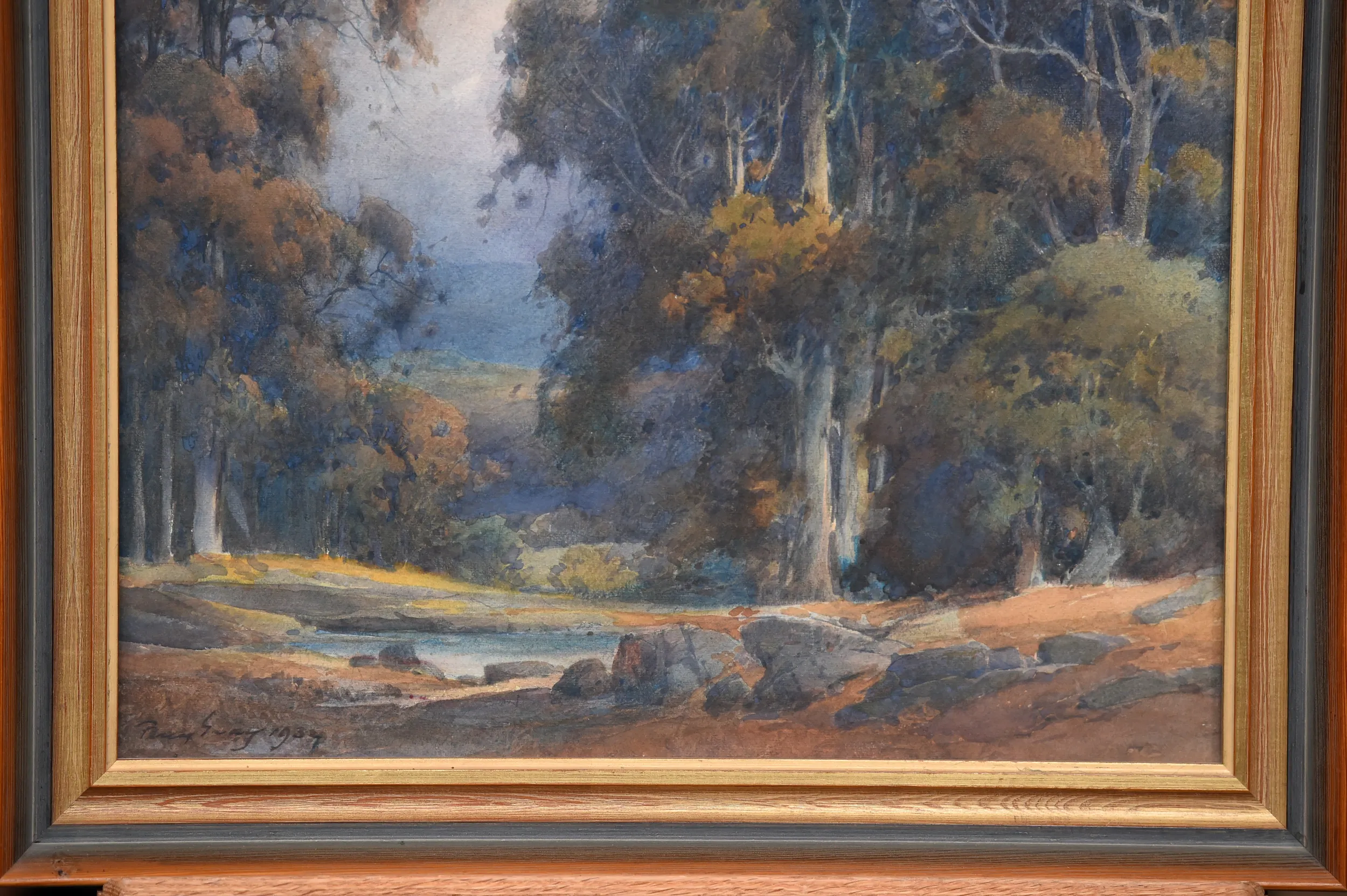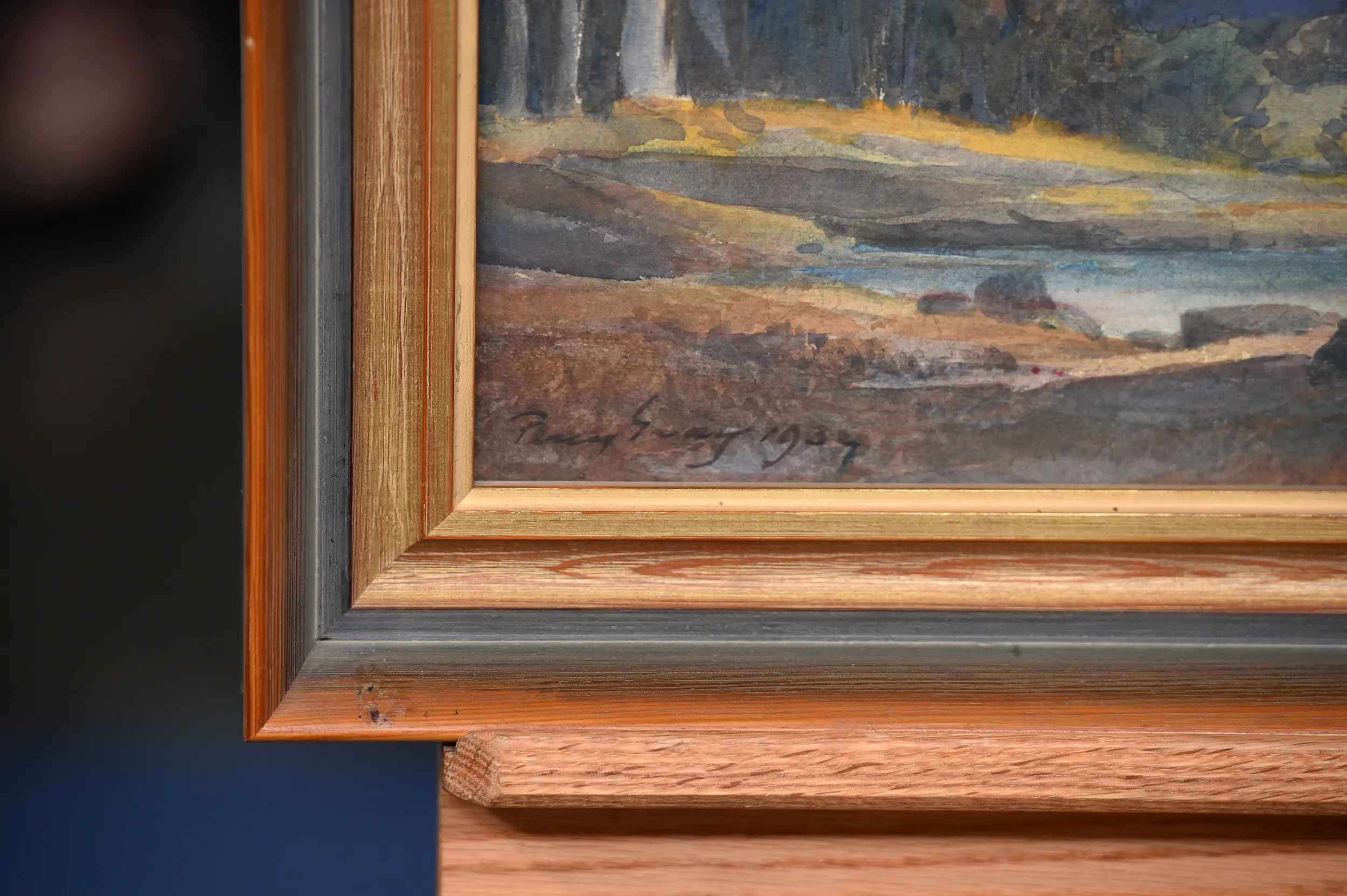APPRAISER: You brought in this very large watercolor by Percy Gray. Where do you have this hanging in your home?
GUEST: I have it over an antique desk.
APPRAISER: Is it in the light at all?
GUEST: No.
APPRAISER: Now where was it before?
GUEST: It was by my dad's front door. I don't think it got any natural light either.
APPRAISER: So you inherited this piece?
GUEST: Yes.
APPRAISER: And what do you know about Percy Gray?
GUEST: I know he loved the California landscape and painting eucalyptus trees.
APPRAISER: Okay, well, Percy Gray is correct, a California painter, he was born in San Francisco in 1869 and he lived out there pretty much. Did some work as an illustrator in New York in the early part of the century, then came out and did a lot of the natural landscape of California-- particularly the eucalyptus trees and the oaks and the cypress out there. This is one of the largest ones you could possibly have.
GUEST: Oh, really?
APPRAISER: In the world of watercolors, we have something called a full sheet. And a full sheet is about 30 by 22 inches. Now often you'll have things that are cut in half or quarters, and 14 by 11 or something, 15 by 11. But this is almost 30 inches and about 22 wide, so you couldn't get a much larger Percy Gray watercolor.
GUEST: Oh.
APPRAISER: The other thing is I asked where you had it because it's in very good condition.
GUEST: Good.
APPRAISER: Every watercolor's faded some, but some more than others. But one of the things to know a good one is to see the colors, the richness of the colors you see in the greens here, but also these blues that you get here. Blue is one of the most highly fugitive colors and it frequently goes away. So you get these blues all the way down through here. It's signed down here "Percy Gray, 1932." So we know at that time he had a studio in Monterey, so it was probably done in the northern central coast area. Did you have it framed or you had your father...
GUEST: No, no, I think my grandfather framed it.
APPRAISER: Well, maybe a little bit after because this is frosted glass.
GUEST: Okay, okay.
APPRAISER: It may have happened in the '60s or '70s.
GUEST: Ah, sounds right.
APPRAISER: And I don't like the frosted glass. You can't really see it as well, do you notice that? I would recommend maybe switching that out, going to a framer and getting ultraviolet- filtered Plexiglas.
GUEST: Oh, really?
APPRAISER: Which would keep the ultraviolet light out and keep it in better shape. Also if it falls off the wall…
GUEST: Right.
APPRAISER: It doesn't break.
GUEST: Right.
APPRAISER: If this breaks, then the glass can cut the image. Now have you ever had it appraised?
GUEST: No.
APPRAISER: Right now, we'd probably put an auction estimate of $25,000 to $35,000 on it.
GUEST: Oh, my. Oh, that's great. I've always loved this piece, so it's nice to know it's worth so much.

